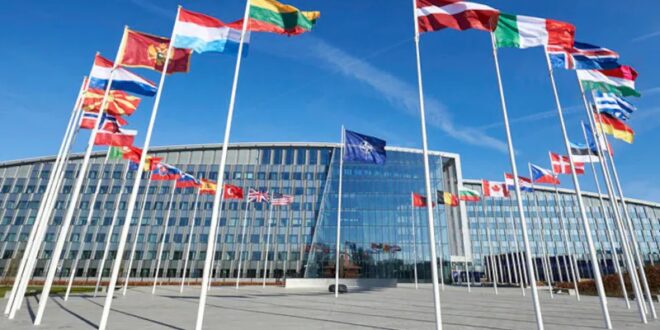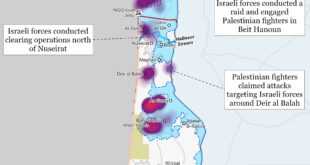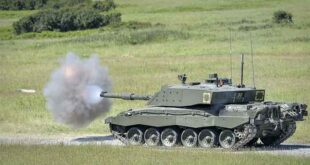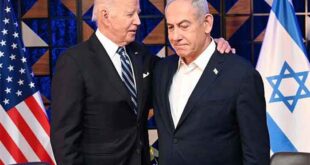Collective defense is at the heart of European security. Enshrined within Article 5 of its founding treaty, NATO allies see “an armed attack against one or more of them in Europe or North America shall be considered an attack against them all.”
Written over seventy years ago with the threat of a Soviet invasion of Western Europe in mind, Article 5 has been formally invoked just once—in support of the United States following the 9/11 terrorist attacks. Collective defense held throughout Europe and prevented open military conflict between NATO allies and the Soviet Union. In the 21st century, however, conflict can take many forms. With that in mind, it’s worth considering whether the time has come to review the text of Article 5 in light of current trends in warfare which may not be captured in the original “armed attack” language.
Since the Soviet collapse in 1991, NATO has evolved. Originally created as a defensive alliance, it has since become more active in “out of area” actions to preserve security and protect human rights, redefining the alliance’s international role. NATO deployed forces in Bosnia-Herzegovina in 1995 and Kosovo in 1999. In the early 2000s, NATO deployed forces outside of Europe for stabilization and training in Afghanistan, training in Iraq, and maritime security in the Gulf of Aden.
After Russia’s 2014 invasion of Ukraine, NATO rediscovered its essential collective defense role in Europe. Members committed to increasing defense spending and ensuring that new allies were interoperable. Russia’s escalation of its war on February 24, 2022, reinforced this need.
Ukraine’s battlefield successes against Russian ground forces, thanks in no small part to Western support for Ukrainian efforts to preserve its sovereignty, will have a lasting impact on European security. As NATO allies upgrade their defense postures, there’s an urgent need to rethink NATO as a political organization and the sort of future threats it may face.
The principal future threat to NATO members probably won’t come from artillery shells or tanks rolling across the border, but rather from cyber, biological, air, and space. And those threats will not only originate from Russia. As the European Union and individual countries in Europe recognize, China poses a threat to Europe.
The challenge for NATO then becomes how to adapt Article 5 to accommodate such longer-distance or non-territorial threats. Are additions or revisions to the NATO treaty’s diplomatic architecture necessary to properly accommodate the potential of cyberwarfare and other emerging technologies? How do non-North Atlantic countries contribute to global security?
Broader Definition of ‘Armed Attack’
The language used in the NATO treaty is very specific, saying “an armed attack” on any member will be considered an attack on all members, and that members would then would “assist the Party or Parties so attacked by taking forthwith, individually and in concert with the other Parties, such action as it deems necessary, including the use of armed force, to restore and maintain the security of the North Atlantic area.” Although Article 6 goes on to describe the sort of targets of an armed attack that would require a response, the definition of armed attack itself is treated as self-evident.
In the contemporary world, however, non-violent attacks can be devastating in their own ways. Cyber attacks, for example, are non-violent and therefore not an “armed attack,” yet could paralyze a country’s infrastructure. This could embolden rogue actors who know that this is a tool they can utilize without necessarily triggering an Article 5 response. While NATO holds annual cyber defense exercises and is clearly taking cyber threats seriously on an operational level, the alliance should pay more attention to the political and strategic implications of cyber warfare.
For example, in 2007 Estonia was hit by a ruthless cyber attack from Russia in response to the removal of a Soviet-era war monument. For three weeks, state and commercial websites ranging from defense ministries to banks and media outlets were targeted, rendering them inaccessible to the public. Estonia was even forced to close its digital borders and block all international web traffic.
At the time, this did not provoke an Article 5 response. However, the alliance has since recognized in today’s world this could be enough for an invocation. And yet, when Iran committed a cyber attack against Albania in September 2022, nothing happened despite Prime Minister Edi Rama being very open to seeing the cyber attack as a threat to collective security.
Part of the reason for NATO’s reluctance to treat cyber attacks as Article 5 matters could be that it isn’t clear what an Article 5 response to a cyber attack would look like. Policymakers struggle with the question, “and then what?” Within traditional warfare, a nation’s attack and defense posture are fairly well understood—sending tanks and missiles in support. The same cannot be said in response to cyberspace operations. Would it merit returning cyber-attacks in kind? Or a stronger, kinetic response?
This lack of clarity in the treaty will continue to create ambiguity within NATO unless it is addressed. A lot of energy is focused on improving interoperability with thirty-two allies, but making Article 5 fit for the next seventy-five years is equally important.
Member States and Allies
The other issue with Article 5 is the narrow definition of which nations the alliance will defend. As the Russian invasion of Ukraine has shown, NATO could not deter an attack on a non-member state. Yet, Russia’s attempt to destroy Ukraine displaced millions of people, disrupted energy imports, and drew non-European countries into the fight, which poses serious security risks within the North Atlantic region. To create an effective deterrent for this type of situation, NATO needs to be able to deter conflict not only for its members, but also a sub-group of “ally states” that have the potential to destabilize Europe.
For these partners, there would not be the strength of a NATO “obligation” to intervene if they were attacked, but it would be enshrined in an updated treaty where member nations will consider in good faith whether to support an ally. This would make it less important to expand NATO’s membership, but create a further deterrent layer that would impact European and North American security.
Obviously, the process of getting NATO members to align on who should be on this list of allies would be challenging. However, once it had been agreed you could go down one of two routes. Either publish the list to discourage an attack on those nations that are “with” NATO, or adopt a policy of deliberate ambiguity as a general deterrent to rogue actors to prevent mayhem on the periphery. This has the potential to grow alliance commitments, but many allies already operate outside the alliance structure in the Middle East and North Africa.
Additionally, for those member states already in the organization, a rethink on the formula for defense contributions is needed. National defense structures need to be fully integrated into a NATO structure to avoid duplication of resources, cost, and effort.
Reclaim the Security Architecture
More broadly, with Russia’s ground capabilities weakened but China’s capabilities moving beyond Northeast Asia, now is the time for a bold vision for a new global security framework. Leading international experts should get together to think through possible changes to the North Atlantic Treaty so that the alliance is fit for purpose in the 21st century. A conference on reimagining Article 5 of the treaty would focus leading geopolitical strategists from around the world on one of the most pressing challenges facing the United States and its allies.
In light of Russia’s attempt to destroy Ukraine, if the West wants to stand against territorial aggression it needs to involve non-Western power blocs within the joint defense architecture. Building on NATO’s Mediterranean Dialogue would secure the Mediterranean and link North Africa to Europe. It obviously isn’t possible to extend NATO membership to all friendly nations and nor should it be attempted. But the West, and particularly the United States, could encourage the creation of sister organizations, including a South Atlantic treaty organization; an organization in the Middle East for the Abraham Accords countries; and similar bodies in Southeast Asia and Africa for nations who share the ideal of Westphalian sovereignty.
This is an opportune moment to re-imagine international security. With a new Article 5 to reflect the modern world of warfare; the creation of a network of allies; and the building out of sister treaties globally, the United States and NATO can better protect its vision of the global world order.
*About the author: Mohamed Amersi is the chairman of the Amersi Foundation, which supports initiatives in education, building cohesive societies, inclusive capitalism, governance, and the futures agenda. The Foundation has also launched the Inclusive Ventures Group, a responsible profits, social impact investing platform that has invested in education, livelihood, health, and waste management in Africa and Asia. Mohamed Amersi is a fellow of Brasenose College, University of Oxford, chairman of the Islamic Reporting Initiative, member of the Boards of COJIT, the Commonwealth Enterprise and Investment Council, and chairman of the Conservative Friends of the Middle East & North Africa. For his transformational work in disseminating knowledge, he was awarded a prize by the Mohamed bin Rashid Al Maktoum Foundation. Mohamed Amersi is also extensively engaged in bringing peace, prosperity, and unity to the Middle East and North Africa region through diplomacy and dialogue by advising key stakeholders on foreign policy issues, conflict resolution, inclusion, and tolerance
 Eurasia Press & News
Eurasia Press & News




